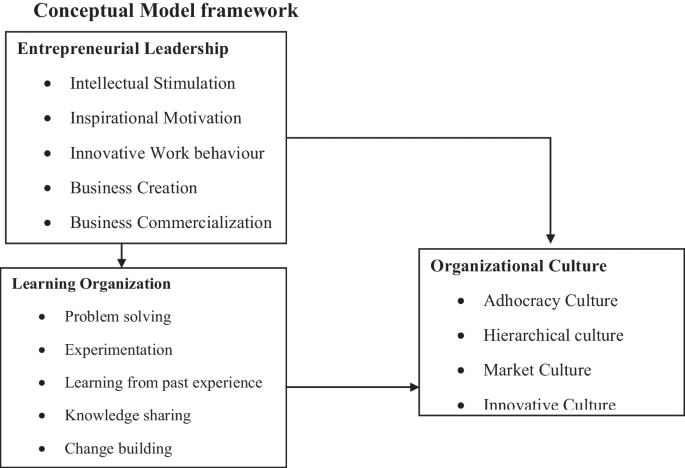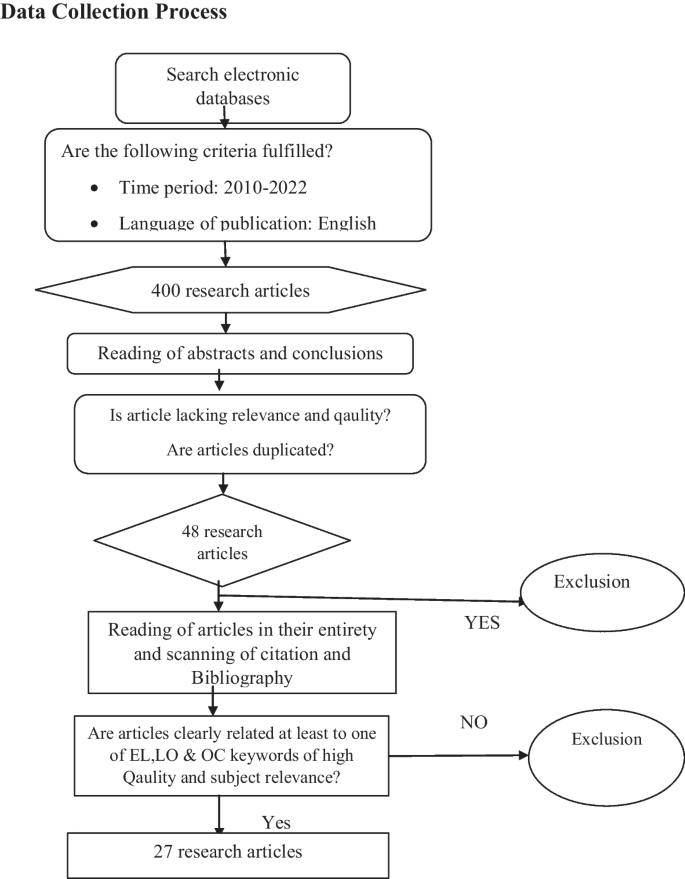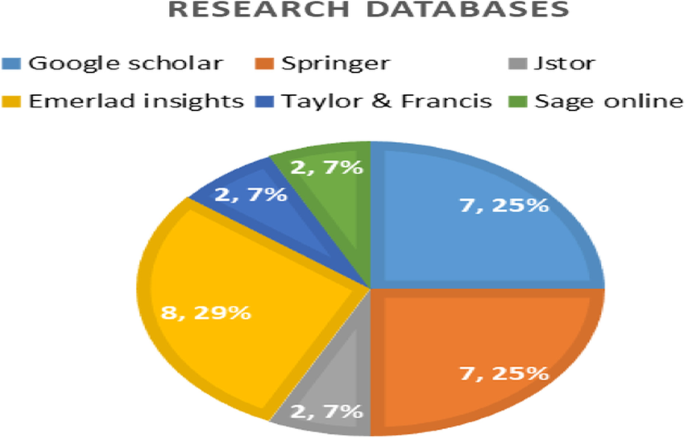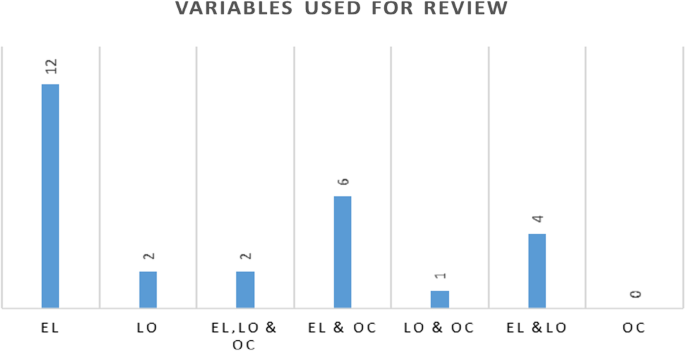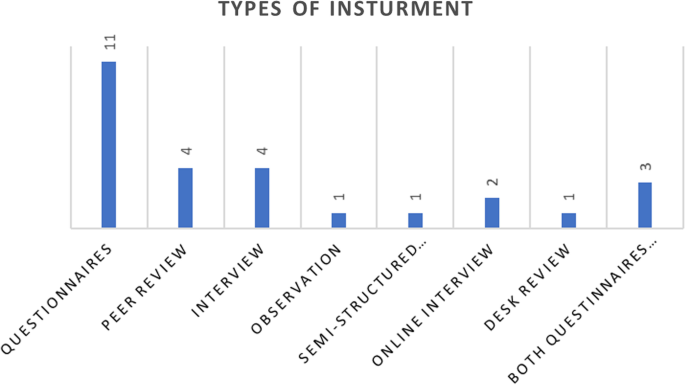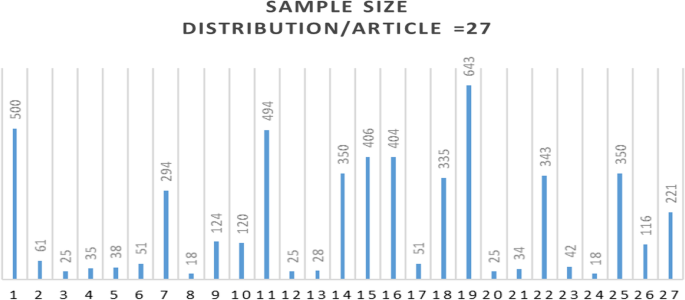- Review
- Open access
- Published:
Entrepreneurial leadership, learning organization and organizational culture relationship: a systematic literature review
Journal of Innovation and Entrepreneurship volume 12, Article number: 38 (2023)
Abstract
The purpose of this study is to examine the relations between organizational culture, learning organizations, and entrepreneurial leadership. The study concentrated on how organizational culture, learning organizations, and entrepreneurial leadership are measured in the literature. The study used a systematic literature review methodology analysis that was published in reputable and peer-reviewed English research journals to look at how organizational culture, learning organizations, and entrepreneurial leadership are related to one another. The study used content analysis on 27 peer-reviewed journal articles that were discovered in various journals examined in the databases, which was based on a systematic examination of the literature. This study offers a comprehensive view of entrepreneurial leadership that has been linked to learning organizations and organizations in various enterprises and nations. The study looked at research approaches, sample sizes, data gathering tools, implications, and limits from the body of literature. The study is also one of the first of its kind to review the research on the connection between entrepreneurial leadership, learning organizations, and organizational culture. The outcomes of this study help the scientific community underline the connection between entrepreneurial leadership, learning organizations, and organizational culture for upcoming policy makers.
Introduction
The relationship between leadership behavioral approach and learning organizational skills and organizational competencies is demonstrated by a relational model, which creates an experimental foundation for the advancement of institutional learning and a further improvement in the future (Tong, 2020). Modern businesses should give entrepreneurial leaders, learning cultures, and organizational learning processes serious consideration if they want to maintain their competitive advantage over other business institutions, meet the needs of the community and the market, attract enthusiastic and high-achieving open-minded leaders, and help solve problems (Abbasi & Zamani-Miandashti, 2013). Even though they have a wealth of resources, the non-modern cultural institutions have a lot of historical problems, which have somehow prevented them from being inventive and taking more chances. According to some evidence, non-modern organizations have made efforts to participate in new organizational contexts (Chan et al., 2020).
Entrepreneurial leaders actively benefit from their institutions and exploit them, and they also influence their supporters by setting an excellent example. They focus supporters’ attention on entrepreneurial goals and inspire them to follow their ambition. Despite the fact that it is focused on the qualities and behaviors of leaders that might support entrepreneurial behaviors, entrepreneurial leadership is distinct from a more general transformational leadership style. However, the two leadership philosophies have certain similarities when it comes to fostering intellectual growth (Renko et al., 2015).
According to (Harrison & Roomi, 2011), creating standardized skills that aid in balancing innovativeness, risk-taking behavior, and the capacity to utilize scarce resources effectively and efficiently helps integrate, achieveability, and care for specific qualities of entrepreneurial teams. In order to become proficient in taking advantage of opportunities, retaining their teams’ core capabilities for pursuing innovation, and obtaining competitive advantage, learning these broad and specialized concepts concurrently in socially engaging, reflective, and experiential methods is helpful.
The popularity of entrepreneurial leadership, on the other hand, has increased to enhance the performance of innovative leadership since it is a differentiating style of leadership that is necessary for handling difficult problems involving current institutional arrangements. But there was no research on how entrepreneurial leadership techniques of institutional leaders affected innovative mentality (Akmaliah et al., 2014). In addition, a thorough definition of entrepreneurial leadership is constructed, which in turn provides the foundation for evidence-based characteristics of its occurrence and its evaluation from a cross-cultural perspective. The creation of theories about how entrepreneurial leadership influences the process of innovation and opportunity hunting is improved by illustrating the scope of entrepreneurial leadership (Bagheri & Harrison, 2020).
Compared to other leadership philosophies, entrepreneurial work appears to be more strongly influenced by leadership styles, and opportunities for entrepreneurship endeavors are even more strongly influenced. One significant category of strategic innovator is the entrepreneur. A crucial step for the development of business sectors is for executives in various organizational situations to adopt an entrepreneurial attitude (Felix et al., 2019).
Understanding the influence of organizational culture on institutional-level entrepreneurial orientation based on the fundamentals of organizational theory development. Entrepreneurship experts have emphasized the value of entrepreneurial orientation for organizations, but the role that organizational culture plays in fostering the predominance of entrepreneurial orientation has not been thoroughly examined. Critical problems include taking into account how the two primary organizational culture aspects of individuality and collectivism might support entrepreneurial orientations in order to promote and contribute to this new study topic (Lee et al., 2019). Therefore, this study examines the relationship between entrepreneurial leadership, learning organization, and organizational culture in different study contexts.
Conceptual model
The concept of entrepreneurial leadership has received increasing interest in recent years. Notwithstanding the growing body of literature from both empirical and conceptual standpoints (Harrison et al., 2018). In entrepreneurial teams, while sharing leadership, cofounders share competencies, roles, vision, stress, and decision-making. The study also reveals various individual and team-level factors which facilitate shared leadership and its outcomes (Lyndon & Pandey, 2020). The study also explains the mechanism through which a firm’s innovative environment mediates the relationship between entrepreneurial leadership and employees’ innovative work behavior (Li et al., 2020). The mediating role of self-leadership in the relationship between participants’ perceptions of entrepreneurial orientation and innovative work behavior (Kör, 2016). A complex analysis of the leadership style preferences of university students combined with their managerial and entrepreneurial inclination, and social and cultural resources is rare in the research practice so far (Perpék et al., 2021). The time has come for Palestinian higher education institutes to follow the emerging trend of offering formal entrepreneurship courses and programs. It is for sure, it will be an essential step to provide the community with entrepreneurs and self-employers who will create jobs and thus boost the economic situation (Arafeh, 2015). The results show that all types of leadership considered in the study have a relevant effect on entrepreneurial activity, particularly on opportunity entrepreneurship (Felix et al., 2019). Practicing entrepreneurial behaviors, managers can enhance employees’ affective commitment, creative self-efficacy, and psychological safety (Iqbal et al., 2022). The study found that in entrepreneurial teams while sharing leadership, cofounders share competencies, roles, vision, stress, and decision-making. The study also reveals various individual and team-level factors which facilitate shared leadership and its outcomes (Lyndon & Pandey, 2020). The critical role that school leaders’ entrepreneurial approaches play in school innovativeness improvement highlights the urgent need for improving school principals’ knowledge and competence in practicing entrepreneurial leadership to bring more innovation (Akmaliah et al., 2014).
According to (Wolfe & Dilworth, 2015), examining organizational culture context through group relations. In their study, they emphasized the connections between entrepreneurial leadership, learning organizations, and organizational culture in different institutional settings. To study the influence of different entrepreneurial psychological leadership styles on organizational learning ability and organizational performance and to provide a theoretical basis for the improvement of organizational benefits of entrepreneurial enterprises in the future (Tong, 2020). The complex and idiosyncratic relationship between culture and entrepreneurial leadership (Tian et al., 2018). On the other hand (Alharbi, 2021), provides important information to the academic community because there are no further studies on this topic as a reference. According to (Renko et al., 2015), entrepreneurial leadership and organizational culture have a relationship in promoting opportunity recognition and exploitation through influencing others. Practitioners apply the combined model of the reflective practitioner and learning organization as this helps innovative leadership (Oeij et al., 2017). After critically reviewing relevant literature the following conceptual model (Fig. 1) was developed.
Conceptual model framework
This study was designed to use a systematic literature review, the researcher selected published peer-reviewed Scopus-indexed journal articles that deal with the relationship between entrepreneurial leadership, learning organizations, and organizational cultures.
This study proposed to answer the following critical questions.
-
1.
How are the relationship between entrepreneurial leadership, learning organizations, and organizational culture evaluated?
-
2.
What types of research instruments have been used in those articles to collect data?
-
3.
In which databases were journal articles of scholars published?
-
4.
What are the research samples covered by the current literature?
-
5.
What are some of the entrepreneurial leadership, learning organization, and organizational culture areas that future studies should be focusing on?
Research methods and coding
Study design
The association between entrepreneurial leadership, learning organizations, and organizational culture was determined by the study through the use of systematic reviews of the literature. With its advantages over narrative and meta-analysis, the researcher favored the systematic review of the literature. Systematic literature reviews differ from narrative reviews in that they present a reliable, trustworthy, scientific, and open procedure to decrease study bias through thorough critical literature searches (De Menezes & Kelliher, 2011).
The majority of the publications in this review (n = 14) were quantitative, four used the systematic review approach, and only six designed their investigations qualitatively. There were 27 articles total in this review. The remaining three (n = 3) used a mixed-methods strategy.
Data collection
A review approach that followed the procedures in the PRISMA framework 2020 for conducting systematic reviews was used to conduct the study review. This makes it possible to coordinate and arrange the data collection process accurately for the remainder of the review process (Fig. 2).
Data collection process
Selection of databases
The study employed a three-step procedure to identify pertinent scholarly articles. First of all, we selected major business/social sciences databases indexed with SCOPUS (Springer, JSTOR, Tayler, Francis, Emerald insights, Sage). Google Scholar was used to search some published articles that were not included in any mentioned databases above. Further, the research emphasizes the relationship between Entrepreneurial leadership, learning organizations, and Organizational Culture. Thus, the selection of the databases is mainly based on the variables indicated in the topic (Entrepreneurial leadership, Organizational learning, and Organizational culture) through evaluating each article downloaded using different methods of systematic literature review. Hence issues of using SCOPUS or Web of Science for the selection of articles were not as demanding for this study since it is possible to use through inclusion or exclusion criteria.
Inclusion and exclusion criteria
The study was conducted based on inclusion and exclusion criteria. The inclusion criteria consist of search boundary, year of publication, language, and search terms. The search boundary focused on peer-reviewed and reputable journals of Social sciences, leadership, and management, Journal of Entrepreneurship and Organizational culture. Research articles published from 2010 to 2022 were included in the search. The year 2010 was used as a base of the earliest date of interest because, in that year, hoping that many publications made emphasized issues of Entrepreneurial leadership, learning organization, and organizational culture. The search for studies was limited to English-language articles. The study used search engines using the Boolean technique and using search terms on “Entrepreneurial leadership,” Innovative leadership’’, “Entrepreneurial orientation’’, “learning organization,” “organizational learning,” and “organizational culture”.
The exclusion criteria include relevance, quality, and duplication. It was done through critical reading of abstracts and conclusions of downloaded articles from several databases. The relevance was determined by deciding whether articles fit a keyword used as a search string and to ensure the quality, the study excluded unpublished articles, book reviews, Miscellaneous, Books, Working paper series, and Conference papers to enhance the findings from this review. Duplicated articles were excluded by assigning ID codes for each article and manual detection. Finally, the researcher carefully screened articles; after checking and deleting duplicates, we created a publication pool with 400 articles. We screened these articles by using several inclusion/exclusion criteria. A total of 27 articles met the inclusion and exclusion criteria. The review procedure enables the study to create a systematic, trustable, replicable, and transparent method of data collection and analysis of the paper followed during article selection for a systematic review of the literature selection process was organized.
Data analysis
We employed a data analysis strategy that combined descriptive and content analysis in respect to review questions that were established at the beginning of the review phases. Utilizing the data mining form's categories, the descriptive analysis was carried out. To do this, the review matrix was tabulated, especially for the discussion of research features findings utilizing points such databases, kind (conceptual, empirical, or review), and level of analysis. In the section that follows, the reader is given a brief overview of the examined publications in this study thanks to the descriptive analysis that supports the study characteristics sub-section. As a method of data analysis, content analysis was also employed. In the publications, encoding concerns were addressed, and the analysis of the outcomes utilized an interpretive method. We used to analyze the results of the study manually.
Results and discussion
This study adopted a systematic review examining research topics related to entrepreneurial leadership, learning organization, and organizational culture relationship. Besides, the current study targeted to investigate the appropriate methods of organizing data using a review matrix table. To achieve these deliverables of the study, descriptive and content analysis methods were used to reach the conclusion, recommendation, and future research.
Study characteristics
The study characteristics are used to provide insights to the academic community or any other readers with a brief introduction regarding the reviewed articles, the study used points such as databases, type (conceptual, empirical, or review), and level of analysis as study characteristics as follows. Figure 3 shows the pie chart showing the databases used to search articles for systematic review. The result is presented as follows.
Types of research databases
As a result, one-third of the research articles examined for this study’s purposes were categorized under the Emerald Insights research database, as shown in Fig. 3. On the other hand, 14 (or 50%) of those databases’ accesses came from both the Springer and Google Scholar databases. As opposed to this, 7% (or a total of 21%) of the articles assessed came from Sage Online, JSTOR, and Taylor & Francis. This suggests that the Emerald insights research database accounted for 8 (29%) of the research articles that were consulted for the study.
Types of study reviewed
Based on the several study types that were reviewed for this study’s objectives, Fig. 4 explains the study that was reviewed. The graph illustrates how many of the 27 publications employed one of the many research methods grouped above for ease of reference. In those articles, 14 quantitative research approaches (52%) were used in the bulk of the investigations. The majority of the examined publications, however, used a mixed-method approach 3 (11%) and a systematic literature review 4 (15%), while some reviewed articles, 6 (22%), used a qualitative research strategy in their studies. As a result, it can be concluded that the majority of the papers analyzed for this study used quantitative research methods.
Level of analysis for variables
Figure 5 displays a total of 27 publications on entrepreneurial leadership (EL), learning organizations (LO), and organizational culture (OC) that were located in English journal papers in the business, management, leadership, administration, and education domains. Out of the 27 papers analyzed, 12 (or 44%) addressed entrepreneurial leadership, 2 (or 7%) addressed learning organizations, and none addressed organizational culture alone. Additionally, out of the 27 articles reviewed, 2 (7% of them) specifically addressed the relationship between entrepreneurial leadership, learning organizations, and organizational culture, while 6 (22%) of the articles reviewed concentrated on the connection between entrepreneurial leadership and organizational culture.
In addition, 1 (4%) of the publications evaluated focused on the connection between organizational culture and learning organizations, while 4 (15%) of the articles reviewed discussed entrepreneurial leadership and learning organizations. According to the data, fewer academics have looked into the connection between entrepreneurial leadership, learning organizations, and organizational culture. The analysis only showed how many students combined the three factors of entrepreneurial leadership, learning organizations, and organizational culture in their research. On the other hand, no researcher in the literature chosen for this study addressed the relationship or connection between organizational culture and learning organizations or entrepreneurial leadership. Using several methods for conducting a systematic literature review, we chose articles from among 400 publications that were relevant to the topic. Even for performing a thorough literature study, the majority of scholars only employ one or two publications. In comparison to other systematic literature reviews that have already been done, the 27 papers that were chosen were sufficient for the study.
Types of instrument deployed
Figure 6 shows the various data gathering tools that were employed in the publications under examination. Out of the 27 publications that were reviewed, 11 (41%) used questionnaires, 4 (15%) peer reviews, 4 (15%) interviews, observation 1 (4%), semi-structured interview, online interview 2 (7%), and both questionnaires and interview 3 (11%) interviews. As a result, questionnaires were the primary data collection tools used in the majority of the studies analyzed for this study.
Sample size distribution
The sample size distribution of the reviewed publications across 27 different journal articles is displayed in Fig. 7. The majority of the 12 scholars’ articles that were reviewed for research articles fall between 15 and 100; 3 journal articles were reviewed between 100 and 200; 2 journal articles were reviewed between 200 and 300; 4 research articles were reviewed between 300 and 400; and 3 research articles were reviewed between 400 and 500. The sample size range employed in the two research studies that were reviewed is between 500 and 600 and 600 and 700. Consequently, references and reviews from studies with various sample sizes were used in this investigation. Accordingly, accuracy and representativeness should rise as sample size does.
Organizing data
Using a review matrix according to (Garrard, n.d.) Guiding procedures. This matrix is used to extract information from the literature and organize it effectively and efficiently. The purpose of the main research question was to find what types of entrepreneurial leadership were associated with learning organization and organizational culture by scholars, and how they were examined through abstracted publication year, authors, methodology/methods, Purpose of the study, instruments, journal titles, main findings, implications and limitations from all 27 articles (See Table 1).
Organizing data based on Garrard Review Matrix
Discussions
Entrepreneurial leadership innovation-oriented organizations have a strong influence on learning organizations and advancement in today’s organizations. Different types of leadership are conducive to building a learning organization. Specifically, understanding how and which entrepreneurial leadership style relates to learning organizations by investigating a structural model of different concepts (Xie, 2020). Recently evaluating organizational learning and organizational culture as the foundation for knowledge-driven innovative leadership, Argote and Miron-Spektor (2011) proposed a novel theoretical framework relating to cognitive and social aspects. There is some literature on the subject of the connection between organizational culture and leadership that is entrepreneurially oriented provided by some academics who have studied both of these topics (Lee et al., 2019). Entrepreneurial leadership is frequently hampered by the effect of corporate culture (Engelen et al., 2014).
The relationship between entrepreneurial leadership theory, corporate culture, and learning organizational abilities, on the other hand. The development of organizational skills and entrepreneurial attitude are also positively correlated (Altinay et al., 2016). Organizational culture and learning structures are both impacted by entrepreneurial leadership, and both have an impact on creativity. The impact of these factors on the innovation potential of educational organizations, as well as the function of leadership in the creation of innovation-friendly environments, are both proven (Gil et al., 2018).
Implications for future practices
The study depicted that the current literature deals with the relationship between entrepreneurial leadership, learning organization, and organizational culture. Hopefully, there is an increasing interest and trends for more research on the link between entrepreneurial leadership, learning organization, and organization culture, there is no indication that a more diverse inclusion of different entrepreneurial leadership types and learning organizations concerning organizational culture will be a target of the scientific community. Moreover, the concepts of entrepreneurial leadership, learning organization, and organizational culture link or relationship are less investigated and still demand to be clarified when studying their relationship with one another or other institutional performance in general. Thus, much more research will be required to investigate how entrepreneurial leadership, learning organization, and organizational culture affect institutional performance in different environmental settings. This review of evidence from a total of 27 research articles accessed only three or four research scholars focused on entrepreneurial leadership, learning organization, and organizational culture.
Limitions and future research
This study, like all others, has several limitations that must be taken into account when interpreting the findings. For instance, we only acquired a little amount of insight into a few pieces that had been published for almost 12 years, which may have been one of our limitations. In light of this, we need to think about additional years in the future by interested researchers. The sample size for this study, which was 27 research publications, is likely another drawback. However, this might be rectified by reading more review articles through interested scholars in the future. The succeeding researchers who are invested in their interest in entrepreneurial leadership or innovative leadership techniques in learning organizations and organizational culture have a significant influence on the findings of this review. A leader who supports the overall organizational working environment should establish a learning organization and a dynamic organizational culture, according to the study’s implications.
Additionally, this study suggests that leaders and senior management at a firm level encourage learning organizational practices in relation to organizational goals and vision. A business leader can implement organizational design or rules that support learning and organizational culture. Additionally, systems thinking and the overarching corporate vision should be used while implementing organizational learning and best practices. Future research will specifically examine the following research issues: how does entrepreneurial leadership affect a learning organization, determinants of organizational culture and learning organization towards innovative leadership, factors influencing entrepreneurial leadership through organizational culture.
Availability of data and materials
The authors are ready to share the data at any time.
References
Abbasi, E., & Zamani-Miandashti, N. (2013). The role of transformational leadership, organizational culture and organizational learning in improving the performance of Iranian agricultural faculties. Higher Education, 66(4), 505–519. https://doi.org/10.1007/s10734-013-9618-8
Akmaliah, Z., Pihie, L., & Asimiran, S. (2014). Entrepreneurial leadership practices and school innovativeness. South African Journal of Education, 34(1), 1–11.
Alharbi, I. B. A. (2021). Innovative leadership: A literature review paper. Open Journal of Leadership, 10(03), 214–229. https://doi.org/10.4236/ojl.2021.103014
Altinay, L., Madanoglu, M., De Vita, G., Arasli, H., & Ekinci, Y. (2016). The interface between organizational learning capability, entrepreneurial orientation, and SME growth. Journal of Small Business Management, 54(3), 871–891. https://doi.org/10.1111/jsbm.12219
Arafeh, L. (2015). An entrepreneurial key competencies’ model. Journal of Innovation and Entrepreneurship. https://doi.org/10.1186/s13731-016-0048-6
Argote, L., & Miron-Spektor, E. (2011). Organizational Learning: From Experience to Knowledge Linked references are available on JSTOR for this article: Organization jnfjTWffl Organizational Learning : From Experience to Knowled. Organization Science, 22(5), 1123–1137.
Bagheri, A., & Harrison, C. (2020). Entrepreneurial leadership measurement: A multi-dimensional construct. Journal of Small Business and Enterprise Development, 27(4), 659–679. https://doi.org/10.1108/JSBED-01-2019-0027
Chan, J. H., Hashim, I. H. M., Khoo, S. L., Lean, H. H., & Piterou, A. (2020). Entrepreneurial orientation of traditional and modern cultural organisations: Cases in George town UNESCO world heritage site. Cogent Social Sciences. https://doi.org/10.1080/23311886.2020.1810889
De Menezes, L. M., & Kellihe, C. (2011). Flexible working and performance: A systematic review of the evidence for a business. International Journal of Management Reviews, 13, 452–474. https://doi.org/10.1111/j.1468-2370.2011.00301
Engelen, A., Flatten, T. C., Thalmann, J., & Brettel, M. (2014). The Effect of organizational culture on entrepreneurial orientation: A comparison between Germany and Thailand. Journal of Small Business Management, 52(4), 732–752. https://doi.org/10.1111/jsbm.12052
Felix, C., Aparicio, S., & Urbano, D. (2019). Leadership as a driver of entrepreneurship: An international exploratory study. Journal of Small Business and Enterprise Development, 26(3), 397–420. https://doi.org/10.1108/JSBED-03-2018-0106
Garrard, J. (n.d.). Le or distribution health sciences literature review made easy The Matrix Method professional.
Gil, A. J., Rodrigo-Moya, B., & Morcillo-Bellido, J. (2018). The effect of leadership in the development of innovation capacity: A learning organization perspective. Leadership and Organization Development Journal, 39(6), 694–711. https://doi.org/10.1108/LODJ-12-2017-0399
Harrison, C., Burnard, K., & Paul, S. (2018). Entrepreneurial leadership in a developing economy: A skill-based analysis. Journal of Small Business and Enterprise Development, 25(3), 521–548. https://doi.org/10.1108/JSBED-05-2017-0160
Harrison, P., & Roomi, M. A. (2011). Entrepreneurial leadership: What is it and how should it be taught ? International Review of Entrepreneurship, 9(3), 1–43.
Iqbal, A., Nazir, T., & Ahmad, M. S. (2022). Entrepreneurial leadership and employee innovative behavior: An examination through multiple theoretical lenses. European Journal of Innovation Management, 25(1), 173–190. https://doi.org/10.1108/EJIM-06-2020-0212
Kiyabo, K., & Isaga, N. (2020). Entrepreneurial orientation, competitive advantage, and SMEs’ performance: application of firm growth and personal wealth measures. Journal of Innovation and Entrepreneurship, 9(1), 1–15.
Kör, B. (2016). The mediating effects of self-leadership on perceived entrepreneurial orientation and innovative work behavior in the banking sector. Springerplus. https://doi.org/10.1186/s40064-016-3556-8
Lee, Y., Howe, M., & Kreiser, P. M. (2019). Organisational culture and entrepreneurial orientation: An orthogonal perspective of individualism and collectivism. International Small Business Journal: Researching Entrepreneurship, 37(2), 125–152. https://doi.org/10.1177/0266242618809507
Li, C., Makhdoom, H. U. R., & Asim, S. (2020). Impact of entrepreneurial leadership on innovative work behavior: Examining mediation and moderation mechanisms. Psychology Research and Behavior Management, 13, 105–118. https://doi.org/10.2147/PRBM.S236876
Lyndon, S., & Pandey, A. (2020). Shared leadership in entrepreneurial teams: A qualitative study. Journal of Indian Business Research, 12(3), 427–441. https://doi.org/10.1108/JIBR-06-2019-0196
Oeij, P. R. A., Gaspersz, J. B. R., van Vuuren, T., & Dhondt, S. (2017). Leadership in innovation projects: An illustration of the reflective practitioner and the relation to organizational learning. Journal of Innovation and Entrepreneurship. https://doi.org/10.1186/s13731-017-0062-3
Perpék, É., Győri, Á., & Lengyel, G. (2021). Preferred leadership style, managerial and entrepreneurial inclination among Hungarian students. Journal of Innovation and Entrepreneurship. https://doi.org/10.1186/s13731-021-00174-4
Renko, M., El Tarabishy, A., Carsrud, A. L., & Brännback, M. (2015). Understanding and measuring entrepreneurial leadership style. Journal of Small Business Management, 53(1), 54–74. https://doi.org/10.1111/jsbm.12086
Tian, M., Deng, P., Zhang, Y., & Salmador, M. P. (2018). How does culture influence innovation? A Systematic Literature Review. Management Decision, 56(5), 1088–1107. https://doi.org/10.1108/MD-05-2017-0462
Tong, Y. (2020). The influence of entrepreneurial psychological leadership style on organizational learning ability and organizational performance. Frontiers in Psychology, 11(July), 1–12. https://doi.org/10.3389/fpsyg.2020.01679
Wolfe, B. L., & Dilworth, P. P. (2015). Transitioning normalcy: Organizational culture, African American Administrators, and Diversity Leadership in Higher Education. Review of Educational Research. https://doi.org/10.3102/0034654314565667
Xie, L. (2020). The impact of servant leadership and transformational leadership on learning organization: A comparative analysis. Leadership and Organization Development Journal, 41(2), 220–236. https://doi.org/10.1108/LODJ-04-2019-0148
Zhu, C., Liu, A., & Wang, Y. (2019). Integrating organizational learning with high-performance work system and entrepreneurial orientation: a moderated mediation framework. Frontiers of Business Research in China, 13, 11. https://doi.org/10.1186/s11782-019-0057-y
Acknowledgements
The authors gratefully acknowledge all partners for their constructive guidance and valuable comments in all aspects of the work.
Funding
Not applicable.
Author information
Authors and Affiliations
Contributions
RMS, ZAB and SZW oversaw the entire process, from literature selection and search to report preparation and policy implications. The authors contributed to all investigational efforts related to the study, as well as report writing and changes based on reviewer comments. Finally, before publication, all authors read comments and made modifications to the final version.
Corresponding authors
Ethics declarations
Competing interests
The authors declare there are no competing interests regarding this study.
Additional information
Publisher's Note
Springer Nature remains neutral with regard to jurisdictional claims in published maps and institutional affiliations.
Rights and permissions
Open Access This article is licensed under a Creative Commons Attribution 4.0 International License, which permits use, sharing, adaptation, distribution and reproduction in any medium or format, as long as you give appropriate credit to the original author(s) and the source, provide a link to the Creative Commons licence, and indicate if changes were made. The images or other third party material in this article are included in the article's Creative Commons licence, unless indicated otherwise in a credit line to the material. If material is not included in the article's Creative Commons licence and your intended use is not permitted by statutory regulation or exceeds the permitted use, you will need to obtain permission directly from the copyright holder. To view a copy of this licence, visit http://creativecommons.org/licenses/by/4.0/.
About this article
Cite this article
Shiferaw, R.M., Birbirsa, Z.A. & Werke, S.Z. Entrepreneurial leadership, learning organization and organizational culture relationship: a systematic literature review. J Innov Entrep 12, 38 (2023). https://doi.org/10.1186/s13731-023-00305-z
Received:
Accepted:
Published:
DOI: https://doi.org/10.1186/s13731-023-00305-z
